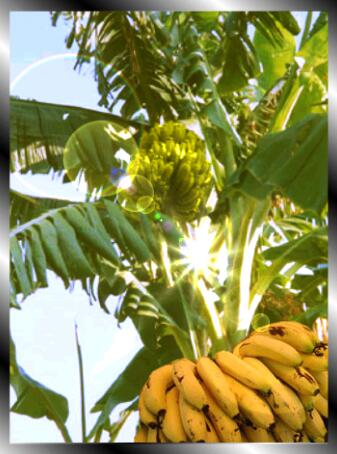PLANTAIN
(Musa X Paradisiaca)
Also Plátano, Plátano Macho, Cooking Banana
In much of the southern hemisphere a good part of dinner is made up of cooking banana, not in a pudding or cake, but as a staple starch or main dish - whether crisply fried, baked tender, formed into spicy fritters or dumpling - like balls (kofta in India, fufu in Cuba), or simmered with a garlicky coconut - chili sauce. Northerners, just lately introduced to some of the members of the Musa family (wich has been on earth longer than mere mortals), have begun to discover the banana's diversity, thanks to the Latin American, Carribean, and Asian restaurants that have sprung up throughout the country. It is the cooking banana that is most popular in the tropics, the hard green or black fruit that is often passed over by many in North American markets, who believe it to be too green, too bruised, too large, or too black. Elsewhere the situation is reserved: it is the sweet dessert banana that we know so well that is eaten in moderation.

The interior color of the fruit will remain creamy, yellowish, or lightly pink. When the plantain's peel is green to yellow, the flavor of the flesh is bland and its texture simply starchy, the uses similar to those for a potato. As the peel changes from yellow - brown through black, plantain plays the role of both fruit and vegetable, having a sweetness and banana aroma, but keeping a firm shape when cooked. Only experience can teach you which stages suit your taste, and consequently how you wish to incorporate the plantain in your meals.
Dubbed plantain in North America, this vegetable - banana (called banane - légume in the French West Indies - where one type of banana is called a fig!) can be eaten, and tastes different, at every stage of development.